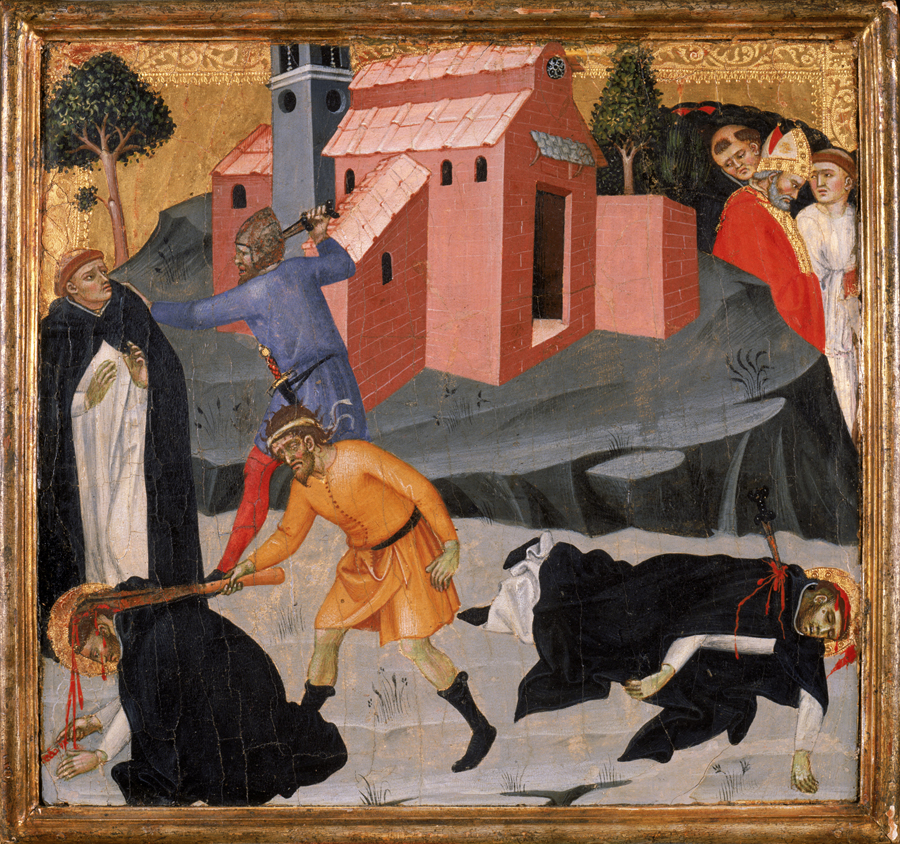Russel invites you to compare this work to Jaguar Warrior by Diego Rivera on the third floor landing. She also contributed audio about that piece.
Maker: Taddeo di Bartolo (c. 1362 – c. 1422)
Culture: Italian
Title: Death of St. Peter Martyr
Date Made: c. 1400
Type: Painting
Materials: Tempera and gold leaf on wood
Measurements: 14 x 15 in.
Transcript:
When I first look at this work, I notice just a lot of people and I feel very confused. I’m just asking myself, what is going on? There seems to be a lot of violence happening, a lot of stabbings and what I’m noticing is blood, especially on the two figures on the bottom half of the painting. But when I look closely, the two figures that are cloaked in black and seem to have been stabbed appear to be the same person. And this is because it is a continuous narrative, which means that a story is being told by multiple scenes but within the same frame. So, for instance, on the lower left hand side the story begins with St. Peter of Verona being stabbed by somebody during his travels. And then when you move to the bottom right-hand corner of the painting, the next part of the story is displayed, where he is lying down kind of dead. And then on the upper right-hand side of the image, you can see church figures, including a bishop in front of a church who seem to have just received news about the murder of St. Peter of Verona. So you can sort of see how one story is being told in sort of a circular fashion within the same frame. This work reminds me of the time that my mom and my sister visited me and checked out the Smith College Museum of Art for themselves. They are not strong museum-goers, so to speak, and when I brought them in to the museum I thought they would be – I had a completely different idea what works that they would be drawn to. But little did I know that their favorite floor at the Smith College Museum of Art was the second floor, especially this work here. They felt very connected to these images, and these images and many of the figures represented felt very familiar for them especially because they are pretty devout Catholics. And so because this work in particular was part of an altarpiece in a church that was meant to be seen by an illiterate population, it was created with the fact that anybody would be able to sort of read these images. And it’s really incredible is to witness these moments of continuity between the purpose that they had then, hundreds of years ago, and how they can still have very similar impact today for many people and visitors.
